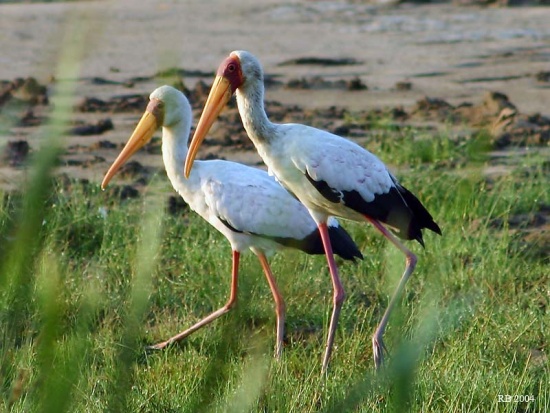- Mycteria ibis
Identification
97cm
- Orangey-red face
- Bill
- Long and thick
- Slightly curved
- Bright yellow
- Long, slender, greyish-white neck
- White back, belly and breast, lightly tinged with pink on feather tips
- Black tail and wing quills
- Long, pink or dark red legs
Distribution
Found in Africa (south of the Sahara) including Madagascar. Fairly regular summer visitor to Lake Nasser and Abu Simbel in Egypt.
Taxonomy
This is a monotypic species[1].
Habitat
Shallow lakes, mud flats, coastal lagoons and meadows.
Behaviour
Diet
The diet includes crustaceans, small fish, frogs, insects and worms.
Breeding
Both sexes build the bulky stick nest. The 2-3 eggs are laid on alternate days and are incubated for 30 days.
References
- Clements, J. F., T. S. Schulenberg, M. J. Iliff, D. Roberson, T. A. Fredericks, B. L. Sullivan, and C. L. Wood. 2014. The eBird/Clements checklist of birds of the world: Version 6.9., with updates to August 2014. Downloaded from http://www.birds.cornell.edu/clementschecklist/download/
- WhoZoo
Recommended Citation
- BirdForum Opus contributors. (2025) Yellow-billed Stork. In: BirdForum, the forum for wild birds and birding. Retrieved 17 May 2025 from https://www.birdforum.net/opus/Yellow-billed_Stork
External Links
GSearch checked for 2020 platform.1






